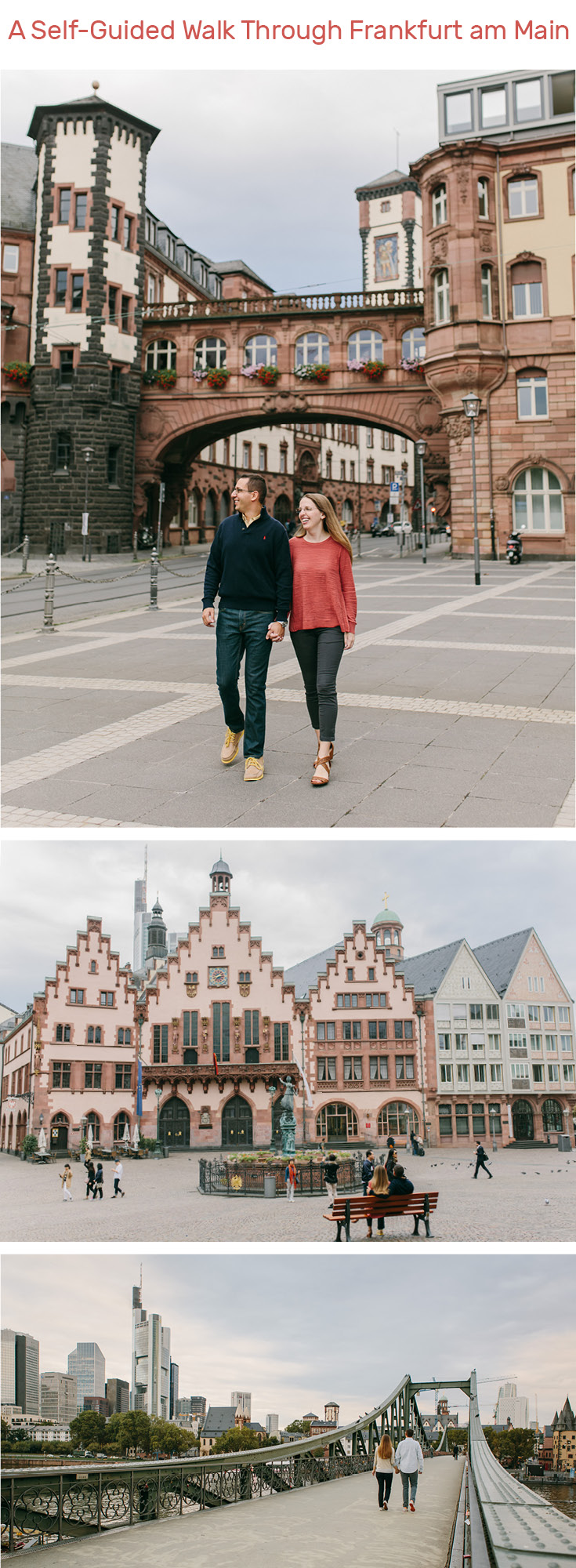Disclosure: Please note that some links are affiliate links, and at no additional cost to you, we earn a commission if you make a purchase.
If you would like to support this website in some way, using these links will help do exactly that.
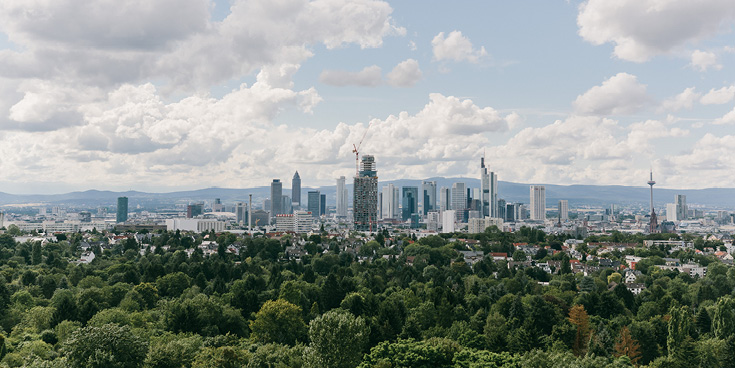
Skyscrapers characterize the cityscape of Frankfurt am Main, my “other” home away from Florida. Fourteen of the fifteen tallest buildings in Germany are in Frankfurt, which is nicknamed "Mainhattan" for this reason. Despite a great subway system to get around, I recommend exploring Frankfurt on foot. This way, you can take in all the details of the exciting architecture in the heart of Frankfurt, and at the same time walk off that good German food or beer.
1. Main Tower (Neue Mainzer Str. 52-58)
Let’s start with a good view of the city first by taking the elevator to the top of the Main Tower. There are two ways to enjoy the 360 degree views of Frankfurt's skyline: you can either take the elevator up, for 7.50 Euros, to the observation deck OR enjoy a cocktail and/or meal at the fine dining Main Tower Restaurant & Lounge, located on the 53rd floor of the tower. If you dine at the restaurant, the cost of the elevator ride will be credited against your bill, so hold onto your receipt, or if you make a reservation the elevator operator will not charge you for the ride. To read more about the Main Tower, check out our earlier post, “What You Need to Know About Visiting Main Tower in Frankfurt.”
2. Hauptwache (An der Hauptwache 15)
Within a ten minute walk you will reach the Hauptwache, a 17th-century guard-house. It housed the municipal police and also contained a prison back in the day. Particularly impressive is the architectural contrast of the 300-year-old building with the skyscraper backdrop of the banking district. When Prussia annexed the city in 1866, Frankfurt also lost its military significance, and with it the city armed forces. The Hauptwache was turned into a cafe in 1905, which has remained there ever since. Prices are more expensive than other cafes in Frankfurt, but it is a great spot for people watching.
3. Paulskirche/St. Paul's Church (Paulsplatz 11)
Keep walking south until you see the Paulskirche, an elliptical building made out of sandstone. This church is very important for the history of democracy in Germany. During the German Revolution in 1848, it was the meeting place of the first all-German parliament since Paulskirche was the largest and most modern building in Frankfurt. In March 1944 the Paulskirche burned completely after a bomb attack and was the first historical building of Frankfurt to be rebuilt after the war. You can see pictures and different flags used for Germany inside, there is no entrance fee. Read more about it in our earlier post, “The Most German of German Churches.”
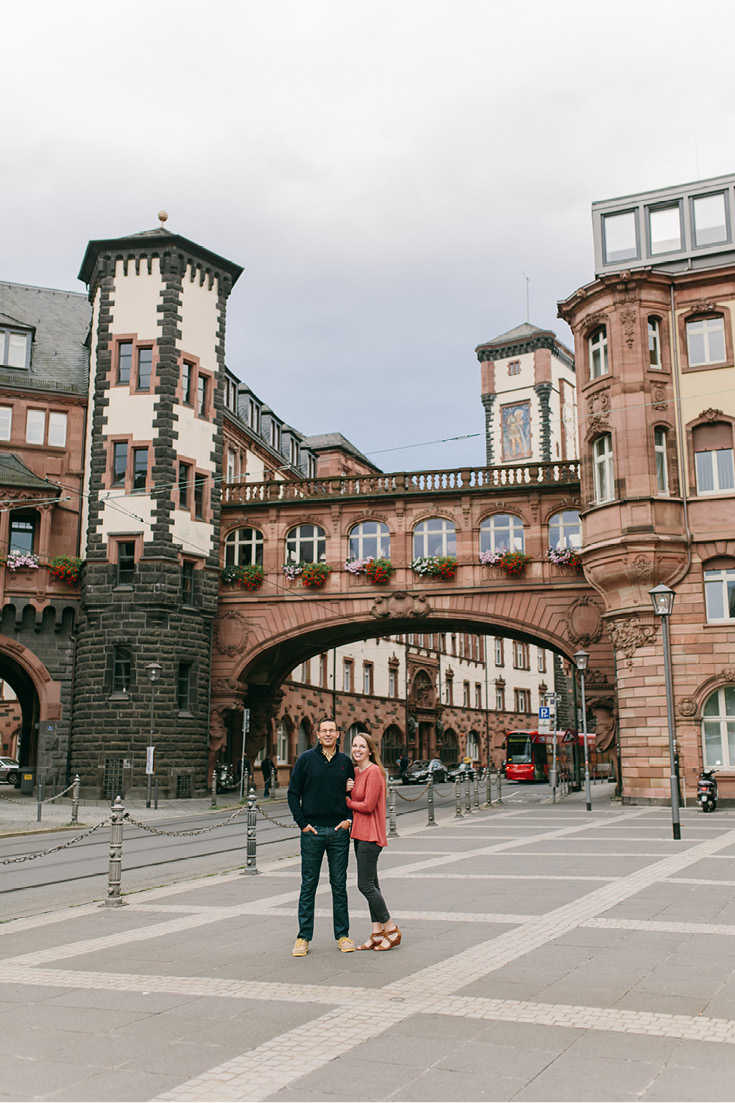
4. Standesamt Mitte (Bethmannstraße 3)
Stepping out of the Paulskirche, you will see the Standesamt Mitte (Frankfurt civil registry office) building across the street. This is where the citizens of Frankfurt come for birth certificates, naturalization, name changes and much more. Definitely worth a quick picture, especially with the covered bridge across the street called Seufzerbrücke. This bridge is nicknamed the Bridge of Sighs, and was built in 1898, based on the Bridge of Sighs in Venice, Italy.
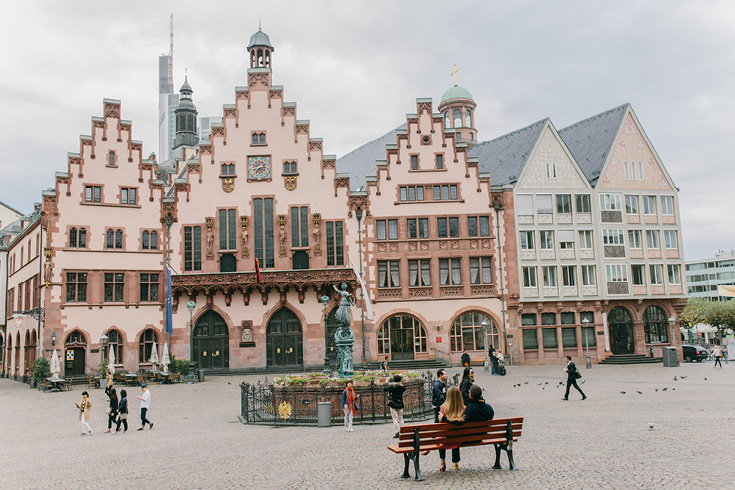
5. Römer/Römerberg (Römerberg 27)
Cross the street and keep left to get to the Römerberg including the Römer building. On the corner is the Frankfurt Tourist Information, in case you have a specific question or need a map. When you walk into the market square, take a minute and look around at all the beautiful buildings. One of the most impressive ones is the Römer building with its characteristic triple facade, which was built in the 15th century. This landmark is the city hall of Frankfurt and the seat of the city council and mayor. This is where couples get married, too and you might run into one of them while you are there.
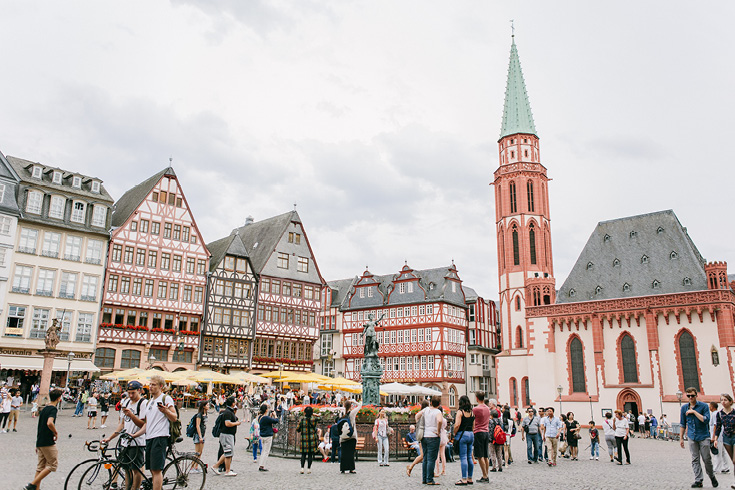
6. Alte Nikolaikirche (Römerberg 11)
Looking at the Römer, to your left is the Alte Nikolaikirche (Old St Nicholas Church) built in the 12th century. Because of its central location, this Lutheran church is open all day for visitors and there are often bilingual worship services. Check their posting board for the current hours.
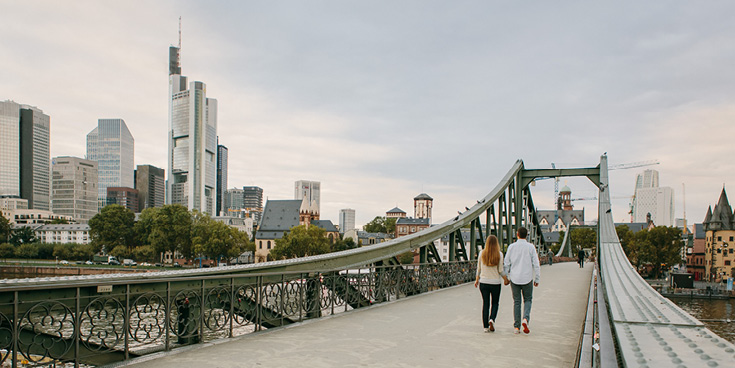
7. Eiserner Steg
Keep walking past the Alte Nikolaikirche and you will get to the banks of river Main, a great place to rest and watch the boats and kayaks go by. Right in front of you is a bridge called Eiserner Steg (Iron footbridge), first erected in 1868 and rebuilt after WWII. Walk to the middle of the bridge and enjoy the best scenic view of the Frankfurt skyscrapers. The perfect time for a selfie without having to watch out for passing cars.
8. Goethe-Haus (Großer Hirschgraben 23-25)
For the last 2 stops we head back to the inner city, right to the birthplace of Johann Wolfgang von Goethe, the Goethe-Haus. This building was the family residence of the Goethe family until 1795. Goethe's study on the second floor is as it once was when he wrote “The Sorrows of Young Werther” and “Götz von Berlichingen” in this room. We loved our visit so much, we even wrote a cheat sheet for your visit, “The Ultimate Cheat Sheet to the Goethe House in Frankfurt.”
And do not miss the Goethe museum next door, included in your Goethe House ticket, where you can discover a comprehensive collection of paintings, graphics and busts from Goethe’s lifetime with artists such as Johann Heinrich Füssli, Caspar David Friedrich, and local Frankfurt painters. To know more, review our earlier article, “What You Must See at the Frankfurt Goethe Museum."
9. Alte Oper (Opernplatz 1)
The last stop on the walking tour will be the original opera house Alte Oper, close to the Main Tower where we started our tour. The beautiful building was built in the Neo-Renaissance style and opened its door in 1880 for just over 2,000 people per showing. The opera house was the venue for numerous premieres, for example Carl Orff's “Carmina Burana” in 1937 and to this day shows concerts and art performances. If you are interested in any upcoming concerts, you can get tickets at the ticket office in the front or one hour before any concert at the box office.
Special thanks to Lifestyle and Wedding Photographer Irene Fiedler, who captured all of the photos in this post. These images were part of a larger photo shoot we collaborated with Irene on, which you can read more about here.
Follow Along
If you enjoyed this article, or these topics sound interesting to you, you'll love our weekly newsletter. You'll receive the newest posts each week and exclusive access to free planning resources like ‘Packing List & Tips for 2 Weeks in Germany’ and ‘Everything You Need to Rent a Car in Germany.
Thank you for reading!

